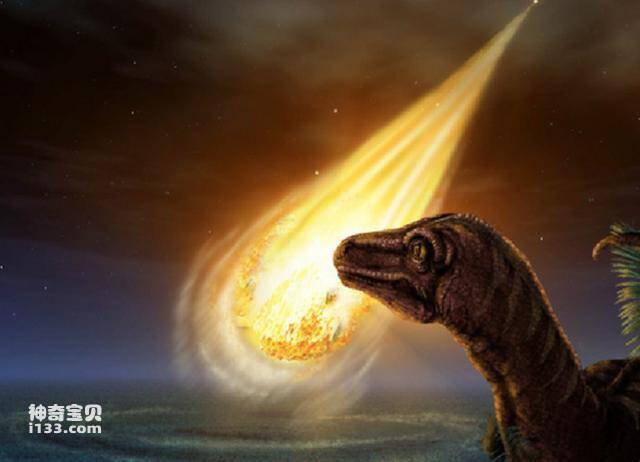At a scientific symposium in 1980, American geologist Alvarez and others vividly told a thrilling story that happened 65 million years ago based on their research results: One sunny afternoon, In the tropical shrubs under the scorching sun, many different types and forms of dinosaurs were walking calmly by the lake or looking for food in the water as usual; at the edge of the forest, a hadrosaurus that had just hatched its eggs was laying eggs. Pacing back and forth around the nest; in an open field, a Tyrannosaurus rex was preparing to pounce on a huge Triceratops...

Suddenly, a loud noise that had never been heard before broke the peaceful world. A meteor several kilometers in diameter slammed into the Earth. This collision was huge. An explosion equivalent to the power of tens of thousands of atomic bombs occurred in an instant. This is an unexpected asteroid, and the impact force generated after colliding with the earth can reach the energy generated by the explosion of 1015 tons of TNT explosives. A huge mushroom cloud carrying dust quickly rose up into the sky, then spread out, and finally enveloped the entire earth. Soon, the dinosaurs lost sight of each other because dark clouds covered the sky and there was no sunlight during the day. This horrific situation lasted for a year or two. The photosynthesis of plants is interrupted, so a large number of plants wither and die. Plant-eating vegetarian dinosaurs died one after another as a result. Later, the meat-eating dinosaurs also became extinct due to loss of food.
This story is the essence of the theory that an asteroid hit the earth and caused the mass extinction of the dinosaurs. Later, it was continuously supported by many scientists. Some scientists even believe that the Earth not only experienced a large asteroid impact during this period, but also suffered many smaller, but still seriously life-threatening asteroid impacts. Among them, it can be confirmed that in the Caribbean and Ia in the United States, Traces of a planetary impact discovered in Washington.
Evidence for this hypothesis also comes from an amino acid present in 65-million-year-old sediments found around the world. This amino acid contains a large amount of iridium, which is present in large amounts in some celestial bodies, but should not exist at all on the earth. This iridium-rich layer has been discovered in many areas of North America, Europe and Australia. This iridium-containing layer was also discovered in the Gamba region of Tibet, my country a few years ago.
Some scientists believe that this explosion wiped out all dinosaurs. However, some scientists believe that only 70% of dinosaurs became extinct at that time, while other dinosaur species barely escaped the disaster, but gradually became extinct in the following millions of years. This latter statement is not unreasonable, because some dinosaur bones are still found in the strata formed after this event 65 million years ago. For example, dinosaur remains have been found in the strata above and below 60 million years ago in New Mexico, USA. Triceratops fossils have also been found in the Cenozoic tundra of Alaska. These phenomena seem to indicate that after the big explosion caused by the asteroid impact on the earth, some dinosaurs still struggled to live for millions of years, and finally became extinct one after another because they could not adapt to the new climate and new environment.
animal tags:
We created this article in conjunction with AI technology, then made sure it was fact-checked and edited by a Animals Top editor.